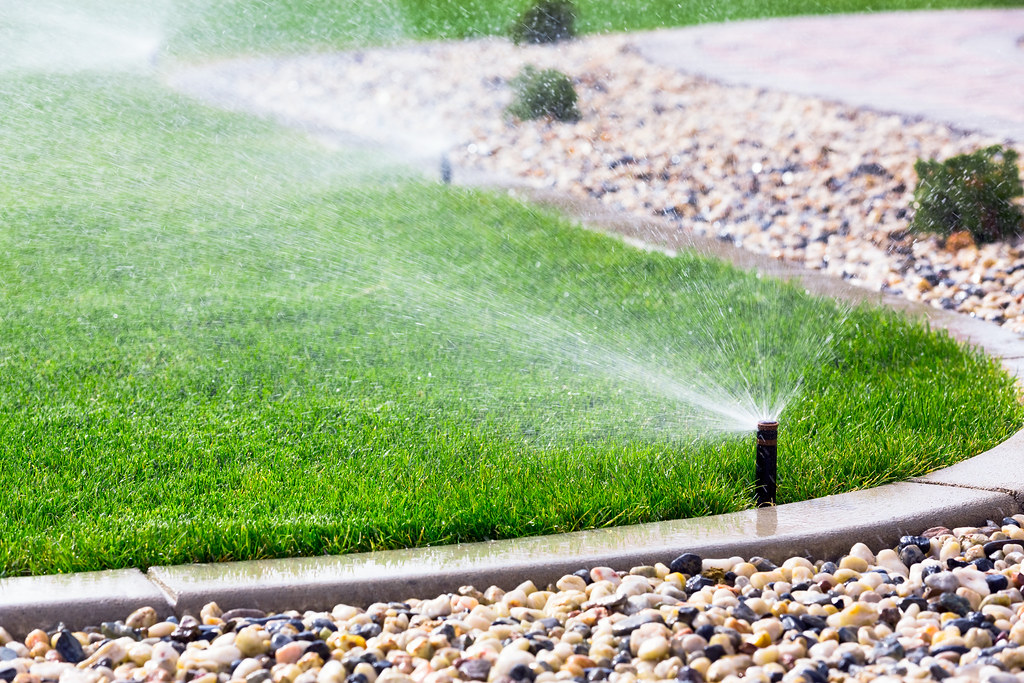Achieve Lush Greenery: Essential Lawn Irrigation Tips

Maintaining a lush, green lawn requires more than just regular mowing and occasional watering. Adequate irrigation is crucial to ensure that your grass stays healthy and vibrant throughout the seasons. With the right irrigation system in place, you can efficiently deliver water to your lawn, promoting healthy growth while conserving water resources. In this comprehensive guide, we’ll explore everything you need to know about lawn irrigation, from the types of irrigation systems available to best practices for efficient watering.
Types of Irrigation Systems:
- Sprinkler Systems: Sprinkler systems are among the most common and versatile irrigation methods. They distribute water evenly over the lawn irrigation in a controlled manner, mimicking natural rainfall. Modern sprinkler systems can be programmed to operate at specific times and can even adjust watering schedules based on weather conditions.
- Drip Irrigation: Drip irrigation is a highly efficient method that delivers water directly to the roots of plants. This system consists of a network of tubing with emitters spaced along its length. Drip irrigation is ideal for watering individual plants, shrubs, or garden beds, as it reduces water waste through evaporation and runoff.
- Soaker Hoses: Soaker hoses are porous hoses that allow water to seep out slowly along their length. They are laid on the soil surface or buried slightly underground and are particularly effective for watering flower beds, vegetable gardens, and areas with dense plantings.
- Manual Watering: For small lawns or areas that are difficult to reach with automated systems, manual watering methods such as hose watering or watering cans can be effective. While manual watering requires more time and effort, it allows for greater control over water distribution.
Factors to Consider:
- Soil Type: The type of soil in your lawn influences how water is absorbed and retained. Sandy soils drain quickly and may require more frequent watering, while clay soils retain water more effectively but can become waterlogged if overwatered.
- Climate and Weather Conditions: Factors such as temperature, humidity, and precipitation levels will affect your lawn’s watering needs. Adjust your irrigation schedule accordingly, watering more frequently during hot and dry periods and reducing frequency during cooler, wetter weather.
- Plant Water Requirements: Different types of grasses and plants have varying water requirements. Be sure to consider the specific needs of your lawn and landscape when planning your irrigation schedule.
- Watering Schedule: Establishing a consistent watering schedule is essential for maintaining a healthy lawn. Watering early in the morning or late in the evening reduces water loss through evaporation and ensures that moisture penetrates deep into the soil.
Tips for Efficient Irrigation:
- Use Smart Controllers: Invest in a programmable irrigation controller that can adjust watering schedules based on weather forecasts and soil moisture levels. Smart controllers help optimize water usage and prevent overwatering.
- Monitor Soil Moisture: Regularly check the moisture level of your soil to determine when watering is necessary. Insert a screwdriver or soil moisture meter into the soil to gauge moisture depth.
- Mulch Your Lawn: Applying a layer of organic mulch to your lawn irrigation helps retain soil moisture, suppresses weed growth, and improves overall soil health.
- Inspect and Maintain Your Irrigation System: Periodically inspect your irrigation system for leaks, clogs, or damaged components. Replace worn-out sprinkler heads, repair leaks promptly, and ensure that all components are functioning correctly.